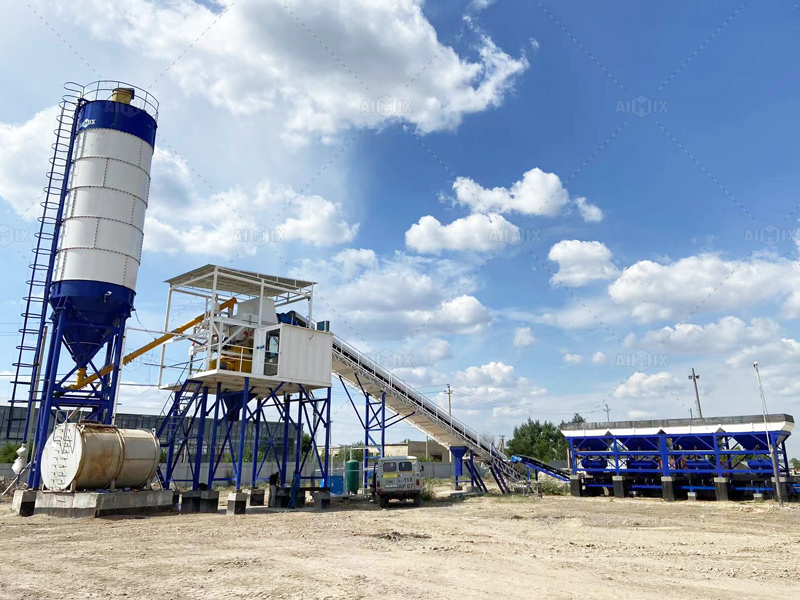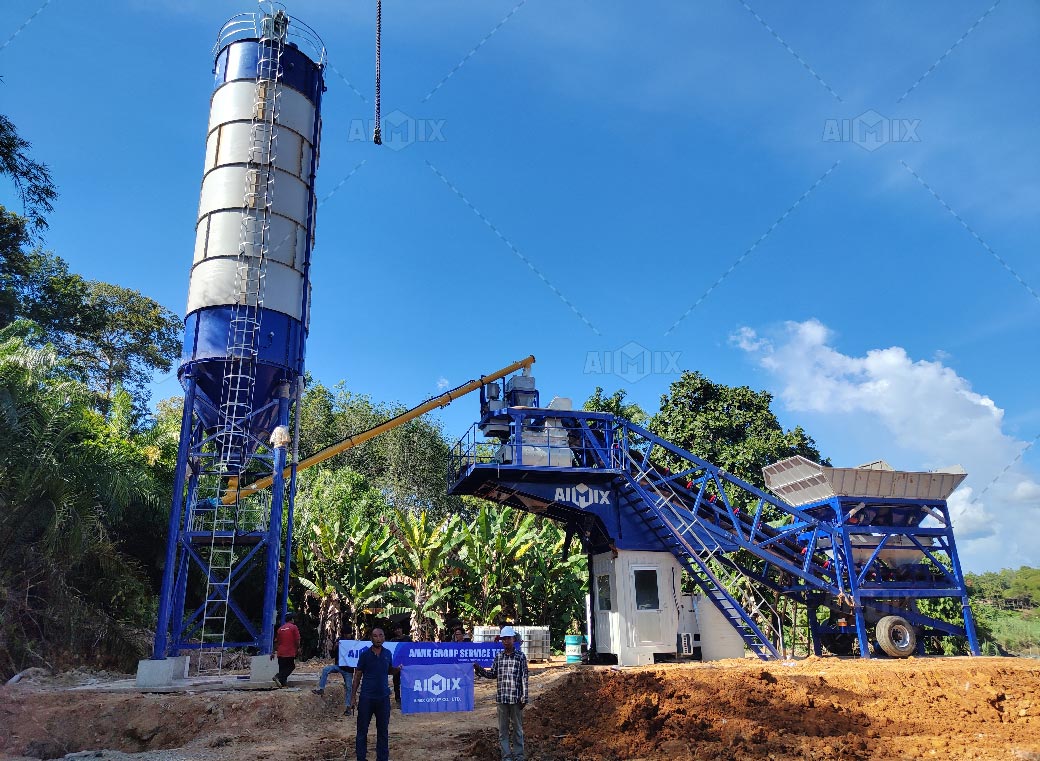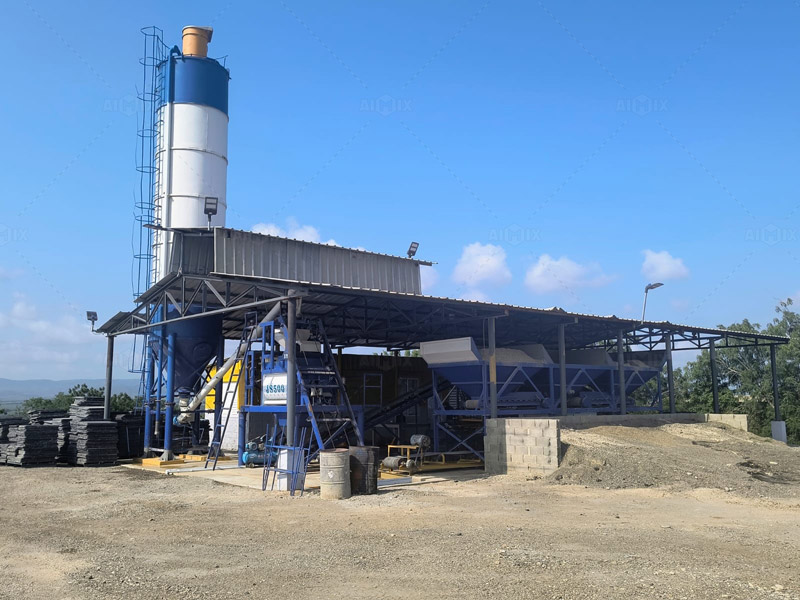Choosing the right installation location for your concrete plant is a critical decision that impacts efficiency, operational costs, and long-term success. Whether you are setting up a stationary or mobile concrete plant, several factors must be carefully considered. A well-chosen location can optimize raw material supply, transportation efficiency, and production capacity, ensuring smooth and profitable operations.
This guide will explore essential factors when selecting an installation site, including accessibility, infrastructure, environmental regulations, and cost considerations. Whether you are investing in a concrete plant(planta de concreto) for sale or evaluating mobile concrete plant price options, understanding these key elements will help you make an informed decision.

Factors to Consider When Choosing a Concrete Plant Location
1. Proximity to Raw Material Supply
A concrete plant for sale(venta de planta de concreto) requires a consistent supply of raw materials, including cement, sand, aggregates, and water. Selecting a site near material suppliers reduces transportation costs and ensures uninterrupted production. If sourcing materials from multiple suppliers, evaluate their reliability and delivery efficiency.
For ready mix concrete plant operations, it is essential to minimize the distance between the plant and suppliers to avoid material shortages or delays. Proximity to a reliable water source is also crucial, as water is a key component in concrete production.
2. Accessibility to Target Markets
A well-placed concrete plant should be located near major construction hubs, infrastructure projects, and urban development zones. This ensures faster delivery to customers, reducing transportation costs and enhancing service efficiency.
For businesses supplying ready mix concrete, the location should allow quick delivery within a reasonable distance (usually 30-50 km). This helps maintain concrete quality, as prolonged transportation can lead to premature setting and reduced workability.
3. Infrastructure and Utilities
Ensure that the site has access to essential infrastructure, including:
- Road networks: Well-maintained roads for easy movement of materials and finished products.
- Power supply: A stable power source to operate mixing machines, conveyors, and other equipment.
- Water supply: A reliable water source for concrete production and equipment cleaning.
- Drainage system: Proper drainage to prevent water accumulation and maintain a clean working environment.
Without these utilities, additional costs may arise for installing power lines, water tanks, or road improvements.
4. Compliance with Zoning and Environmental Regulations
Before setting up your concrete plant for sale, check local zoning laws and environmental regulations. Different regions have specific guidelines regarding industrial operations, emissions, and waste disposal.
Consider the following:
- Noise regulations: Concrete plants generate noise from machinery and trucks. Ensure compliance with local noise limits.
- Dust control: Implement dust suppression systems to minimize air pollution.
- Environmental permits: Obtain necessary approvals to avoid legal issues that could halt operations.
Failure to comply with regulations can result in fines or plant shutdowns, impacting profitability.
5. Land Area and Layout Requirements
The installation site should have sufficient space to accommodate production units, raw material storage, loading/unloading zones, and vehicle parking. Key space considerations include:
- Batching plant layout: Ensure smooth workflow for material movement and mixing operations.
- Storage facilities: Allocate space for aggregate bins, cement silos, and water tanks.
- Truck maneuverability: Provide ample space for trucks to enter, load concrete, and exit without congestion.
While mobile concrete plants require less space, a well-planned layout improves efficiency and safety.

Evaluating Different Types of Concrete Plants
1. Stationary Concrete Plants
Stationary concrete plants are designed for long-term production at a fixed location. They are ideal for large-scale projects that require a continuous concrete supply. Key considerations for site selection include:
- Proximity to major construction sites or suppliers.
- Availability of utilities and infrastructure.
- Space for raw material storage and expansion.
Since these plants cannot be relocated, choosing a strategic, long-term site is crucial.
2. Mobile Concrete Plants
Mobile concrete plants offer flexibility for temporary or remote projects. When selecting a site, consider:
- Ease of transportation: Sites with good road access allow quick setup and relocation.
- Limited space requirements: Mobile plants need less space but still require efficient layout planning.
- Mobile concrete plant price(Planta de concreto móvil precio) vs. installation cost: Evaluate whether leasing land is more cost-effective than buying.
3. Ready Mix Concrete Plants
Ready mix concrete plants supply pre-mixed concrete to construction sites. These plants should be located near urban areas or industrial zones for quick delivery. Critical location factors include:
- Traffic conditions: Avoid areas with heavy congestion to ensure timely deliveries.
- Delivery radius: Maintain a reasonable distance from clients to prevent concrete setting before use.
Site Accessibility and Logistics Considerations
1. Road and Traffic Conditions
Efficient transportation is key to smooth operations. Consider:
- Highway access: A site near highways reduces travel time and fuel costs.
- Traffic congestion: Avoid locations with frequent delays that could impact delivery schedules.
- Truck restrictions: Some urban areas have restrictions on heavy vehicles; check regulations before finalizing a site.
2. Delivery Radius Optimization
For ready mix concrete plant(planta de hormigon elaborado) operations, the delivery radius should ideally be within 30-50 km to maintain concrete quality. Longer distances increase fuel costs and risk premature setting.
3. Space for Vehicle Maneuvering
The site should have designated loading/unloading zones and turning areas for trucks. Poor layout planning can cause traffic congestion within the plant, affecting productivity.
Cost Considerations for Concrete Plant Installation
1. Land Acquisition and Site Preparation
Land costs vary by location. Consider:
- Urban vs. rural areas: Urban land is expensive but offers better market access. Rural land is cheaper but may require infrastructure investment.
- Site preparation: Clearing land, leveling, and installing utilities add to the initial cost.
2. Transportation Costs
Calculate long-term transportation costs, including:
- Material supply costs: Distance from cement and aggregate suppliers.
- Delivery costs: Fuel and vehicle maintenance for transporting finished concrete.
A well-located concrete plant reduces these expenses.
3. Maintenance and Operational Expenses
A good location minimizes maintenance costs by ensuring:
- Easy access to service providers.
- Stable power and water supply.
- Minimal wear on transportation routes.

Environmental and Community Impact
1. Dust and Noise Management
Install dust suppression systems and noise barriers to minimize environmental impact. This ensures compliance with regulations and maintains community relations.
2. Waste Management and Water Usage
Implement waste recycling and water conservation measures to meet sustainability goals.
3. Community Relations
Engage with local communities to address concerns. A positive relationship prevents legal challenges and fosters long-term cooperation.
Conclusion
Selecting the right location for your concrete plant involves evaluating accessibility, infrastructure, regulatory compliance, and cost factors. Whether investing in a stationary or mobile concrete plant, choosing a strategic site enhances efficiency and profitability. Conducting thorough research and planning ensures long-term success and seamless operations.
